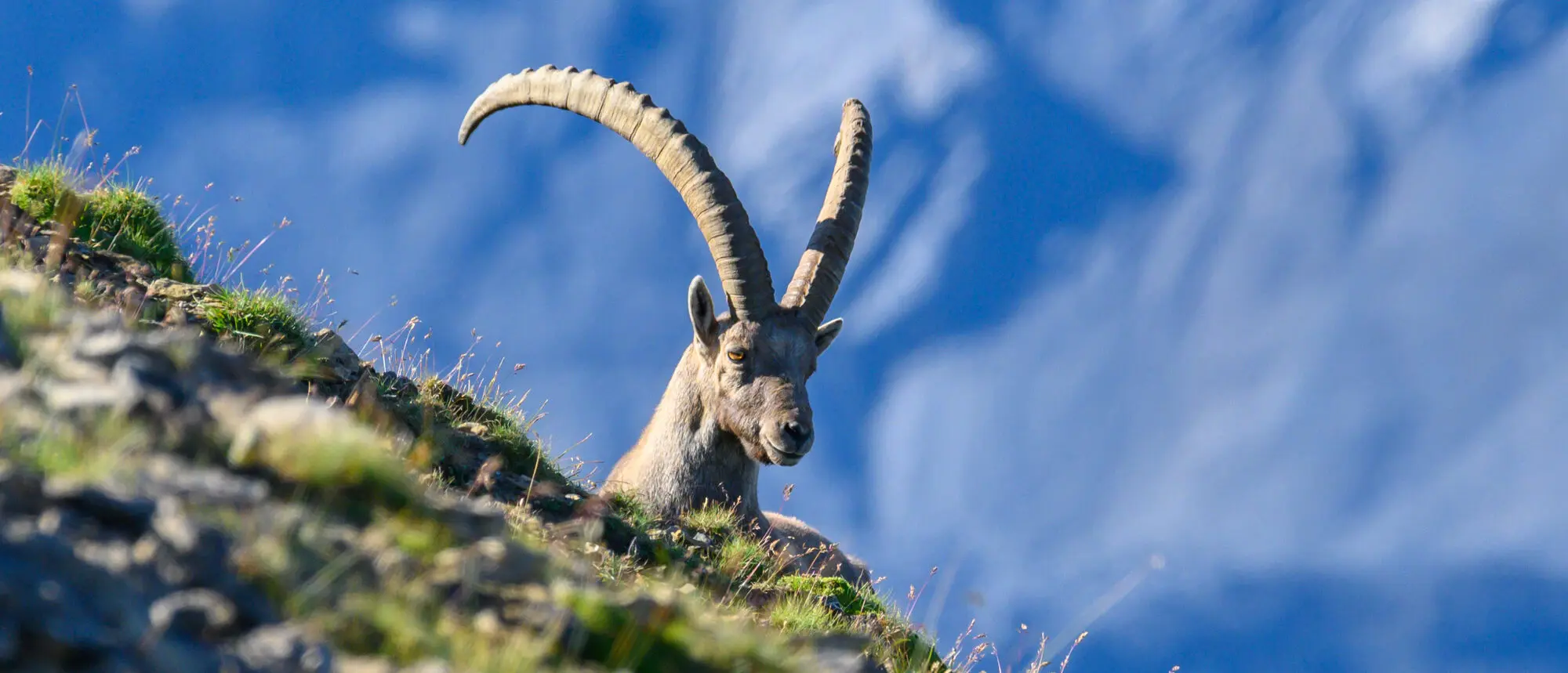Who can imagine nowadays that the ibex was once regarded as a wandering medicine chest, hence its extermination?
By 1650, the ibex had been exterminated in Graubünden. Its lack of fear of human beings and the medical properties attributed to its flesh and horns were its undoing. At the beginning of the 20th century, two of the last remaining ibex were poached from a herd belonging to the Italian king Vittorio Emmanuele III and smuggled into Switzerland where the Peter & Paul Wildlife Park set up a breeding station, unique in the world. In 1920 the first ibex bred from this pair were released in the National Park. Nowadays around 300 ibex live in the National Park.
The word for ibex in Romansch is «macun» and there are indeed ibex living in the region called Macun situated above Lavin – hence its name. Since 1 August 2000 the ibex in that region are also inhabitants of the National Park.
 Not just a heraldic symbol or an advertisement for beer.
Not just a heraldic symbol or an advertisement for beer.
Ibex certainly are impressive creatures! When you see them slowly lowering their heads and moving their horns – which can be nearly one meter long – from side to side, you cannot but show them respect. Don’t let their rather lethargic movements and massive bodies fool you, though; they are extremely agile climbers.
Like chamois, ibex have horns which grow throughout their life, increasing in length every year by a few centimetres. From the annual rings at the back of the horns it is possible to see exactly how old these animals are.
Though they may weigh as much as 90 kilos, ibex are extremely agile climbers. They are very sure-footed and have an excellent sense of balance.
 Female ibex are very attentive and keep a close watch on their surroundings.
Female ibex are very attentive and keep a close watch on their surroundings.
Similar to chamois, female ibex live in small herds with other females and young ibex. The young are born in June and have a warm, woolly coat – very necessary in the raw climate they live in. They grow up within the protection of the herd.
The horns of the female ibex are smaller than those of the male. The annual rings are closer together and it is not as easy to tell their age. A female ibex can reach up to 24 years of age – which is remarkable when one considers their hostile habitat.
Ibex feed on alpine herbs and grass, as well as – in winter – bushes, roots and lichens.
 Like red deer, ibex live in separate male and female herds of 10 to 30 individuals.
Like red deer, ibex live in separate male and female herds of 10 to 30 individuals.
In herds of females the lead female holds an important position. In herds of males there is an obvious order of hierarchy: the size of the horns is a sign of individual strength. In August and during the rutting season in December the strongest males demonstrate their dominance.
Ibex do not rut until December, although rivalry already begins in summer.
Normally rather lethargic, male ibex become a lot more active in August. Impressive fights take place between animals of equal strength seeking to find their hierarchal place. This does not, however, exclude occasional fighting during the rutting season in December. In general, though, ibex cleverly avoid an extreme loss of energy during the rutting season, unlike red deer and chamois.
 Ibex live mainly on mountain sides above the tree line and only very rarely descend into the forests.
Ibex live mainly on mountain sides above the tree line and only very rarely descend into the forests.
Few animals use their energy as economically as the ibex. Their apparent lethargy is an efficient survival strategy.
During migration from the high altitude summer ranges to the winter ranges, ibex, in particular the males, cover long distances.
How an ibex is able to optically assess the quality of its landing place remains a mystery. The precision and certainty with which they land is remarkable.


